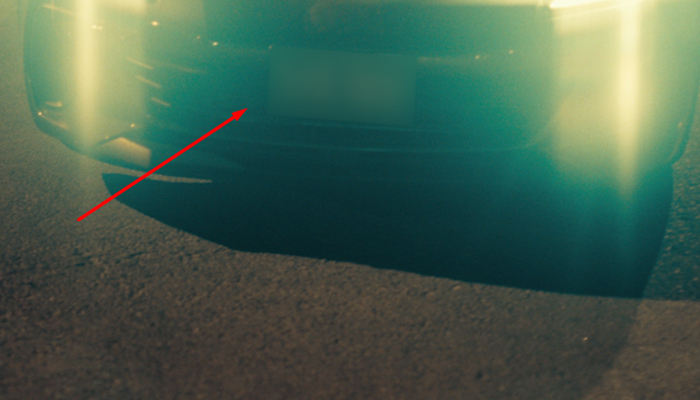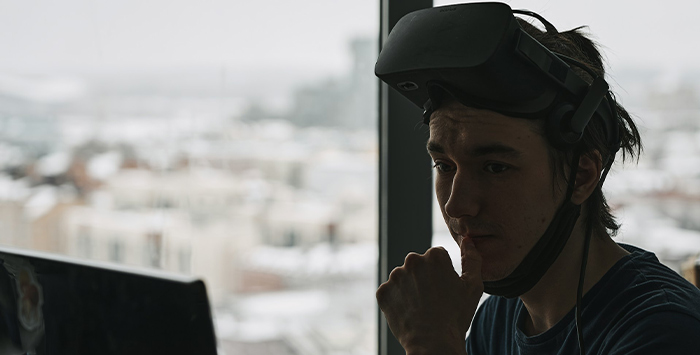Today we’re talking with the editor of the TV series Star Trek: Picard. Discussing season 3 is Drew Nichols, who is also an associate producer on the show. Drew started off in reality and documentary programming about 15 years ago and transitioned into scripted as an assistant editor on great shows like Mad Men and True Detective. He moved into the scripted television editor's chair on 12 Monkeys, The In Between, American Cartel, and MacGyver.
Star Trek Picard with Editor Drew Nichols
You've come from a reality TV background. There are so many people that say, “How do I get from reality to scripted?” Can you tell us a little bit about your background and how you came to be editing Picard?When I first came out to Los Angeles, I was actually in a band. I played drums. Music is kind of a big thing for me. While I was trying to do music, there was a reality TV house that was needing someone, like a night AE to digitize tapes and to do some very basic assembly editing stuff.
I had gone to film school, but it wasn't until doing that that I started to think there's something kinda interesting about editing, the rhythm of it, the construction of it, finding the story and putting the whole thing together. I had kind of taken on more tasks as a night assistant editor. The people at the company saw that and they said, “Well, do you wanna just switch into editing?” I said, “Absolutely. Sure.” I started editing reality TV, and various things.
The company I was at luckily did a lot of interesting stuff. It was a lot of docudrama, historical things. It’s probably five, six years when I edited reality TV. Then, at a certain point, I was looking towards the future and I was worried that I was gonna get just burned out doing reality TV. It's a lot on yourself. You have to basically be your own assistant editor. You're doing your own sound work. You're finding the story in lots and lots of material, which is great practice, but at a certain point, you're thinking, "I want to go beyond this. I want to really have a great story and be able to refine that story." Someone I worked with was a sound editor. They worked on Mad Men. At a certain point, I said, “I'm curious about doing this. Would you mind asking them if I could take them out to lunch and get their experience, see how they broke in, introduce myself to them.”
He said, “Absolutely.” I sent emails to all three editors of Mad Men. They all got back to me. I had lunch with all of them. They were super gracious with their time and just being willing to meet with me.
I met with one of the editors, Chris Gay. He said, “I have this independent film that I'm doing this summer. There's no money. I can do it myself, but I'd love to have an assistant editor. Would you want to do it to just learn the ropes of scripted assistant editing?” I said, “Absolutely, yes! When do we start?”
It was all at his house. I drove down to Manhattan Beach to his house and I would assemble bins. He showed me how he liked everything assembled, how he liked bins, and laid out the dailies process.
I did sound work. He was kind of taking me through how he liked his tracks laid down and sound ideas. He let me cut some scenes and gave me feedback. He let me sit in with the director who was at his house to see the whole process and also say, “Okay, this is Drew's scene. Would you mind working with him?”
I got to sit in the hot seat, as we call it, and get direct feedback from the director himself. That was a super cool experience and I was just thrilled to have it. Towards the end of that experience, he said, “My assistant editor on Mad Men’s got something else coming up. He's not gonna be able to start this next season. Would you wanna jump into Mad Men with me?” I said, “Yeah. Again, where do I sign up? When does it start? Let's do this.”
Luckily, the post-producer, Blake McCormick, was very cool about bringing me on. Again, I had an independent feature. That was it. That's all the experience I had. He trusted Chris and I met with him. I interviewed with him. Apparently, we had a very good interview because he said, “I'm gonna give you a shot basically. Let's see if you can do it.” It was very much being thrown in the deep end, but I relished it.
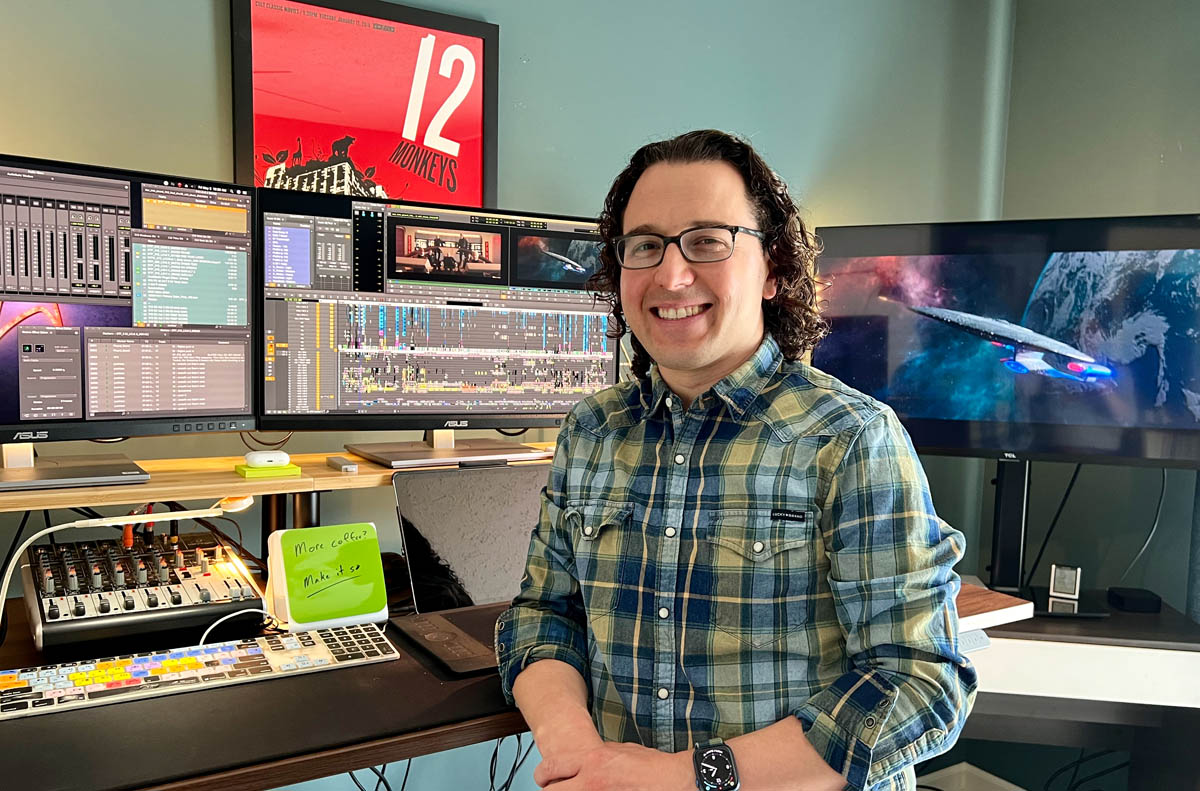 Editor Drew Nichols
Editor Drew Nichols
I got to go and do basically the first half-season of the final season of Mad Men with Chris. Then, his assistant editor came back, but one of the other editors, their assistant editor, was going off to edit an independent feature herself. That editor said, “Do you want to just wanna just come on with me now?”
I jumped from Chris Gay to Chris Figler and finished the final season of Mad Men. Then, from there, that's when basically the floodgates were opened. From there, I worked on True Detective season two, which was with Blake, who was the post-producer who brought me in. That's kind of how it all started.
It's funny how serendipitous it can be sometimes, but it's also about just being available and sometimes just taking a chance on things. When you start, maybe they don’t pay or it's low pay, but it's an opportunity to get some experience, a credit, and you never know where those things may lead. That’s how I actually got my start in from reality into the scripted side.
A couple of lessons that I take from that is one, people say, “It's a business of who you know,” but it's not like it was your dad that gave you a job. You had a friend that liked you; you are a person that he thought, I will step out and people will like Drew. He's a good guy, right? You need to have that going for you and also you have to work pretty hard. You've got to be willing to step into the deep end. You've got to think, "This is over my pay grade maybe, but I'm willing to try it." Another thing that I heard that I really loved: a lot of times people think, "Oh, I don't have that skillset." But as you said, the Mad Men editor that brought you on the indie, he thought he would like to work with you, just as a person. He was willing to teach you all the other stuff.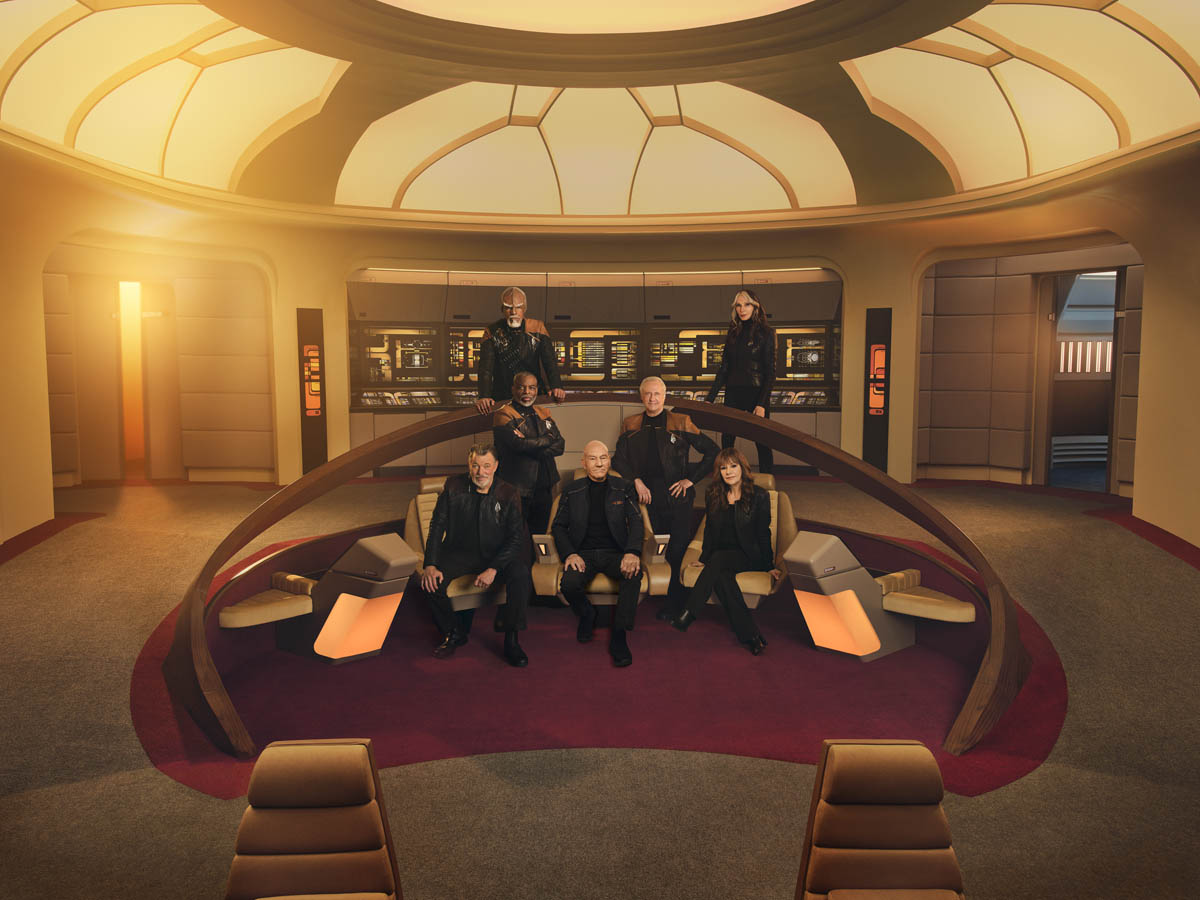
Yeah. Forever grateful to him. He's a mentor still, basically. I worked with him as a colleague and as an editor on 12 Monkeys. I'll still text him and talk to him and ask him questions about things. Also from that, it taught me how valuable that is.
One of the other editors on Picard, Michael Benni Pierce, was an assistant editor on season two and he got bumped up on season three. I was in that role that Chris was in where I was just helping him along as a fresh editor of “Here's how you do this.”
Especially on a show as complicated as Picard and make him feel as comfortable as he could, that he knows there's a safety net there that, I know this is the deep end, but you're not there by yourself. We're gonna get through this together. All those things I learned from Chris. I'm just paying it forward basically, which I think is great when editors can do that. I think it's a really special thing that editors can provide, especially to their assistant editors and young editors.
I am always amazed at how friendly and open this industry is to other people. Just over and over again, I see, "Hey, I want to help you out." There's very little that I hear of attitude from anybody at even the highest levels, to be honest, so it's great to hear.Same. Some of the very experienced editors that I've met who've been super cool and just down to talk shop and answer questions. There's no ego. It's all about everybody helping each other out. It's such a cool community and I'm very fortunate that I get to be a part of it and try my best to foster it towards the next generation that's coming in after us.
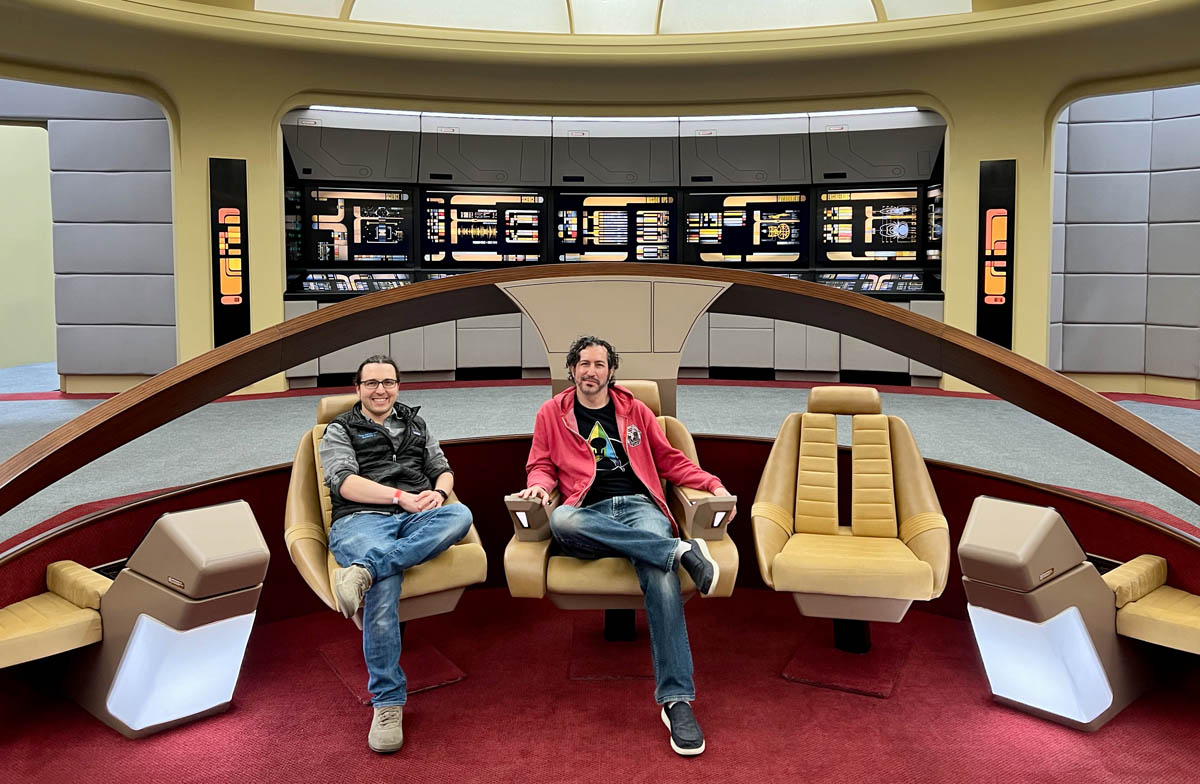 Drew and Assistant Editor Justin Bloch
Drew and Assistant Editor Justin Bloch
You're totally right. The amount of people that say, “I play drums” — or I'm a guitarist or something. Rhythm and music I think are just essential to editing. I think people who have that are drawn to that. I'm not saying you need to have that to edit. I've met plenty of editors who love music but aren't necessarily musically inclined themselves, but it's amazing the amount of people who you can talk a little music with on the side of talking editing shop. I think it's definitely a common thread, for sure.
I also noticed that you are an associate producer on Picard and I just got that title on the last TV series that I edited. How did you get it? Why did they give it to you and what does it mean?I had worked with [showrunner Terry Matalas] before with 12 Monkeys, where I got my start editing. I had come in as an assistant editor and I got bumped up. Terry was showrunning and he basically gave me a shot on that. Through doing that, I think I proved myself to him. We did a couple of seasons of 12 Monkeys.
I think he trusts me and I think he also felt that there were a lot of stakes with season three of Star Trek: Picard because when you're bringing back this legacy cast, telling this legacy story, there's a lot of pressure. There's a lot of fans who are gonna be very sensitive about it, who are gonna feel lots of different ways about it.
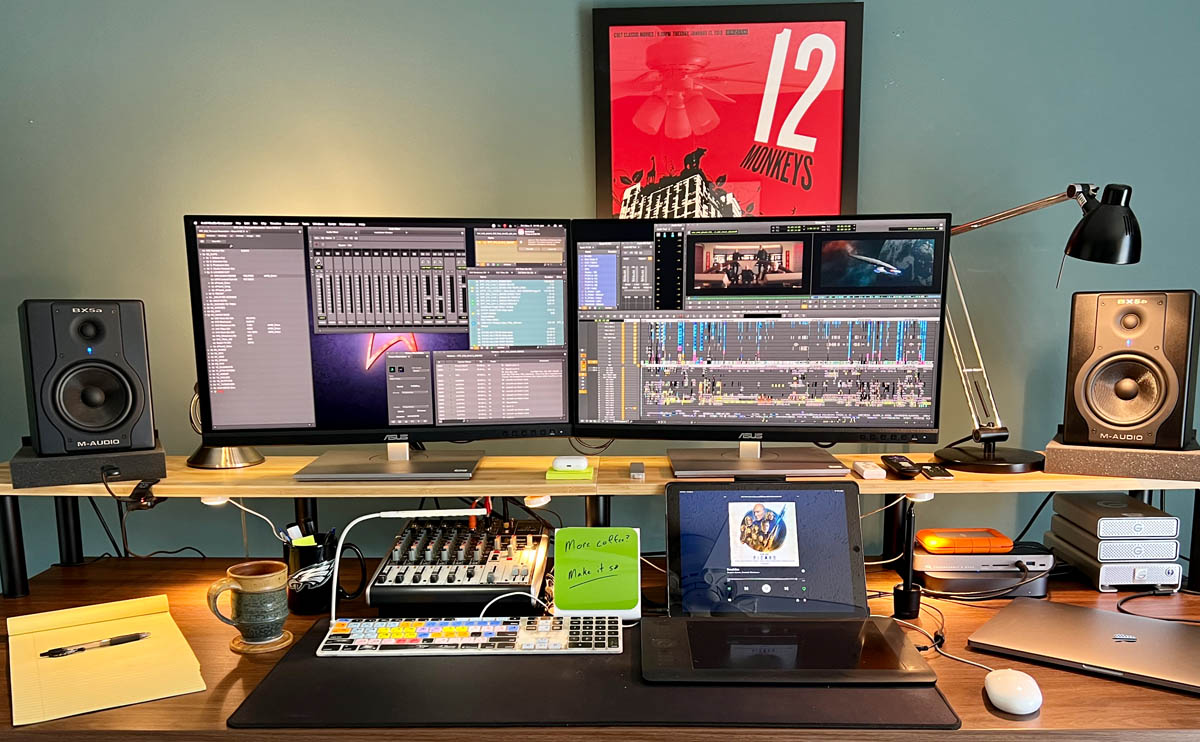
He wanted to put his best foot forward and make sure that we were just doing it as well as he as we could. Because of the scale of the production and he was directing the last few episodes, he had asked me before the season, “Would you mind being on all the producers’ screenings with me? If I can't be in a meeting, can you kind of jump in and be my voice?”
In doing that, I got this associate producer credit this season. I was involved in all of the producers' cut screenings, watching it all and giving notes. Sometimes, he would ask me to pre-screen if he didn't have time. It would just be me and the editor after the director's cut. Just basic stuff. We didn't go crazy with it, but just had questions about certain things, about pacing. It's the first time for me too, so I think we were all just trying to figure out what the job entails in the end. But that was the baseline for it. I think he trusted me to kind of be his voice in certain things when he just couldn't be involved in.
I think that word “trust” when it comes to getting those extra little titles is big, that they feel like, "I kind of need this voice to help me, and two, I trust their creative vision or I trust that they understand the process and the project enough that they can help."Yeah. That trust was certainly forged on 12 Monkeys, where we had to do lots of editorial tricks and things to try to work our way out of jams sometimes. It's a time travel show and it was extremely well laid out, but you always get to those spots where something is suddenly like, "Oh, wait. That doesn't work." Then you're pulling things from other episodes, flash forward, flashback, things that we just kind of came up with that I think he felt like we could get out of any jam basically.
A problem solver.Yeah. I credit reality TV with a lot of that, about thinking on your feet and finding the thread in something that you wouldn't necessarily think the thread is there, but it is. It's just hidden sometimes. I credit that background with helping me to be kind of become a problem solver when it’s called on.
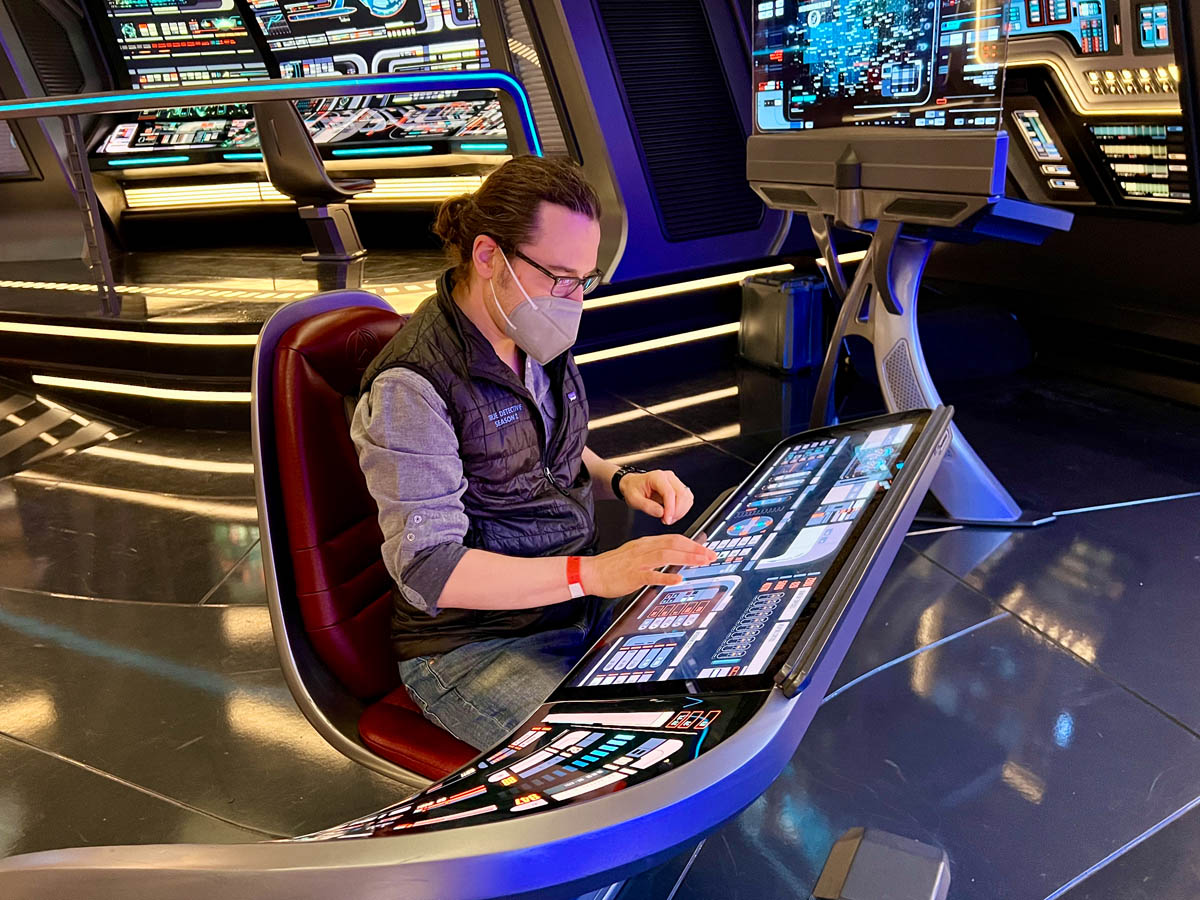
Right, right. Or when the note comes, you think, well, what else do we have? And you’re like, well… [laughs] lots of stuff! Let me go back in there and see.
One of the things I wanted to talk to you about as an editor is the need to deal with a lot of fantastical sci-fi dialogue because I'm listening to this and I love it. How do you find the truth in some of that fantastic dialogue?You have to lay it all out first, right? Just, here it all is. Then, you go through and then you’re thinking, "What do we need to tell the story here?" I think the cool thing with season three, specifically of Picard, is that Terry was doing it as this love letter to Star Trek, but I think he was trying to make it accessible to people who weren't necessarily giant Star Trek fans either. They recognize The Next Generation cast and think, oh, that's cool. They could kind of just come into it. That was fine. You didn't need to see everything, every series, every movie. If you did, it was a benefit for you because there are easter eggs planted all over the place and there's tons of stuff that you're gonna pick up, but you wanted to keep it accessible.
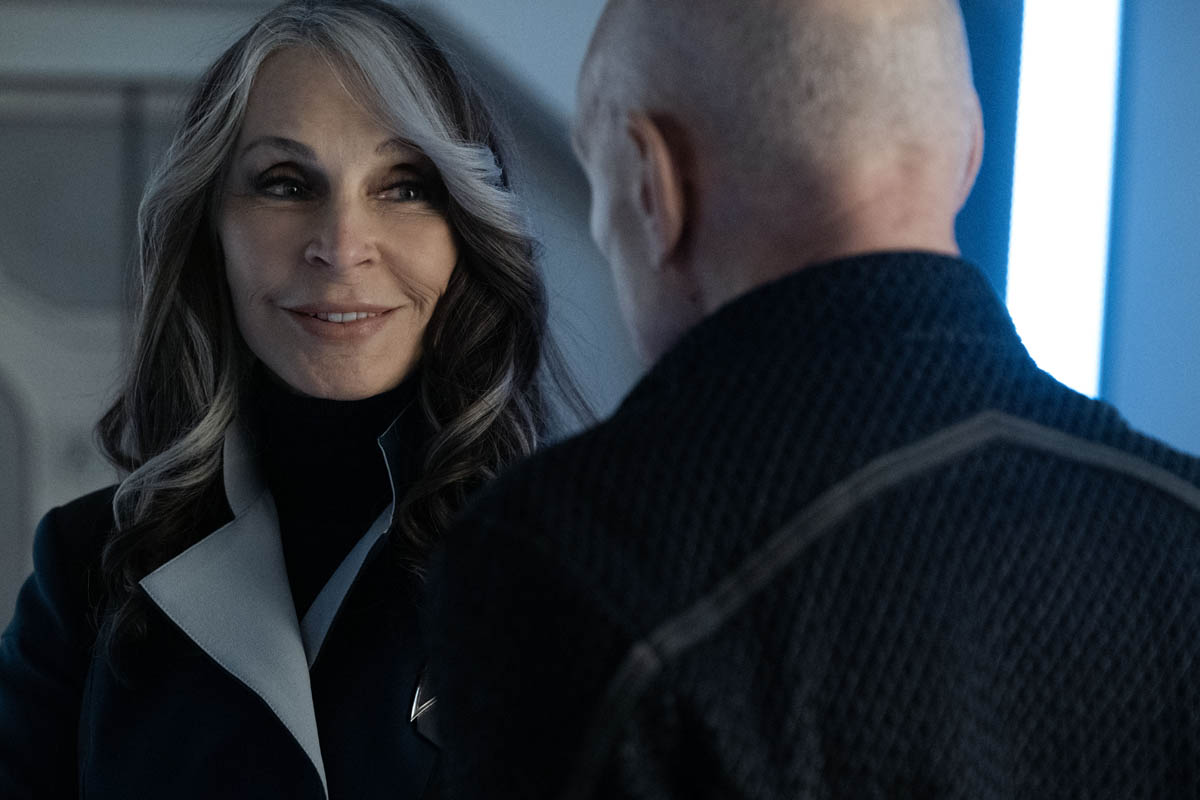
There is a lot of great drama. You're talking about just basic drama. But then, when you get to the techno-babble, as we call it, these things to explain the sci-fi things, we had to lay it all out. Then, it was just passes of going through it and saying, “What do we need? At what point are our eyes kind of glazing over a little bit?” Then, also, “What are you cutting to with some of that stuff?” We obviously have people talking, which is great, but what are we talking about? Is there a screen to show something? Is there a graphic we can create that will help? We can lose some of the dialogue, but the graphic will help to explain this thing because it's important you understand what the thing is because then we're gonna go do the thing. You don't wanna be confused when the actions happening. You wanna have the table set, basically.
It was passes of dialogue trimming and then those graphic explorations of “What if it wasn't shot this way? What if we pop to a screen and we create a graphic and the graphic does this?” That helps to explain and to get through some of this dialogue a little more efficiently and to keep the audience engaged so that they haven't turned the thing off before the action happens.
Having been able to work with some of the material, one of the things that I've been struck with is the importance of sound effects in selling the reality of it. Can you talk a little bit about that?I mean, totally. Terry is a big Star Trek fan. He would pull sound effects from original series, original movies, the Next Gen movies. We would layer them in along with this kind of new soundscape that we had created because the ship's new for the most part until we get to the Enterprise D. It's a new ship.
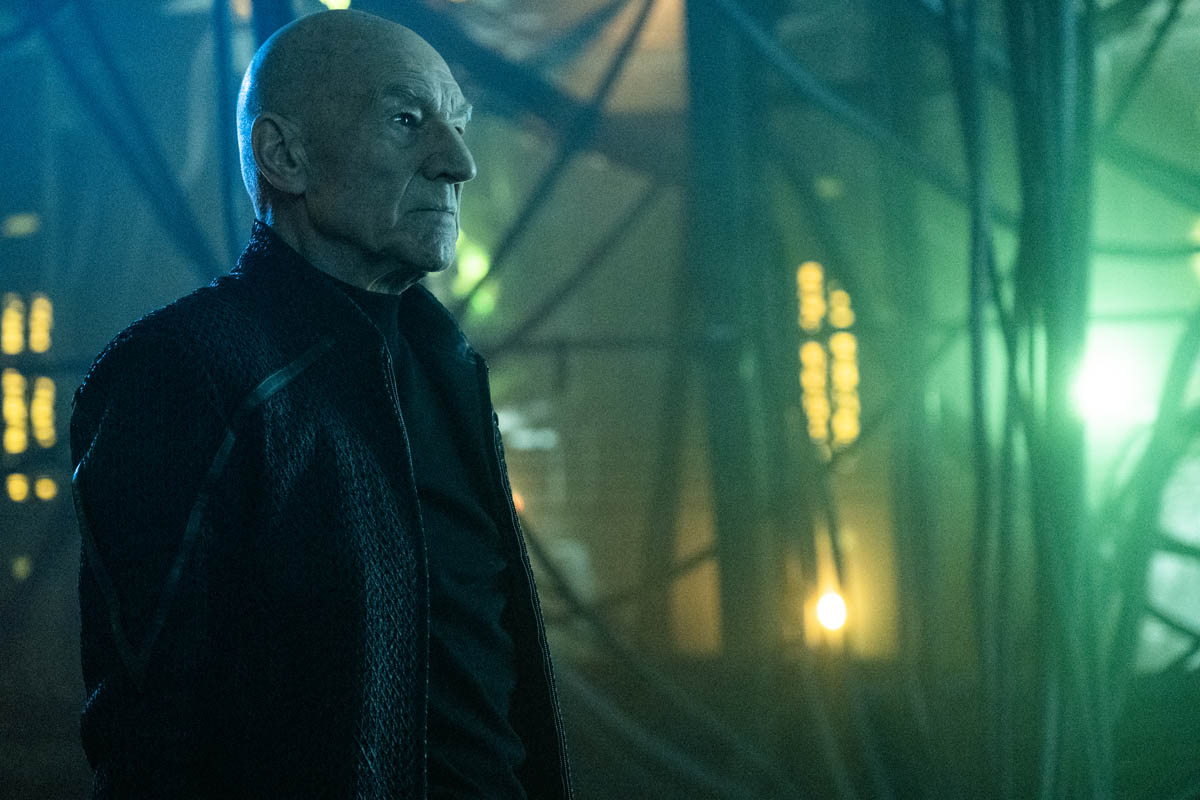
We want it to feel like a new thing, but also, we wanna have the sounds from the show that you remember. The big one that he definitely liked was the Sputnik sound that they used in the original series a lot on the bridge, He wanted to pop that in so it just feels like Star Trek. It's just kind of a subtext. It’s there, it's buried in the background sounds, but it's just a layer that kind of gives you a feeling.
He would have tons of that stuff. In the premiere episode of season three, there's the boatswain whistle that is pulled directly from Star Trek VI: The Undiscovered Country.
The sound is the sound. There are a couple of spots where we have some beeps and the beeps are from Wrath of Khan and they're the beeps. He brought specific things in, along with our amazing sound team who just used a lot of these references, not only the specific things, but the references to kind of create this very elaborate soundscape. It's not overbearing, but it just makes you feel like you're on these ships and it just has the essence of Star Trek to it.
What elements are you working with when you've got purely CGI images when you're early in the edit? Are you just putting up a slate? Do you have some pre-vis, some conceptual art? What are you using?Big shout out to the VFX team because some of these shots are feature film-level CG shots. They take lots and lots of time to do. Basically, what we get from the VFX team is that they would read the scripts and then they would start doing some pre-vis CGI-type stuff as far as ships and different things.
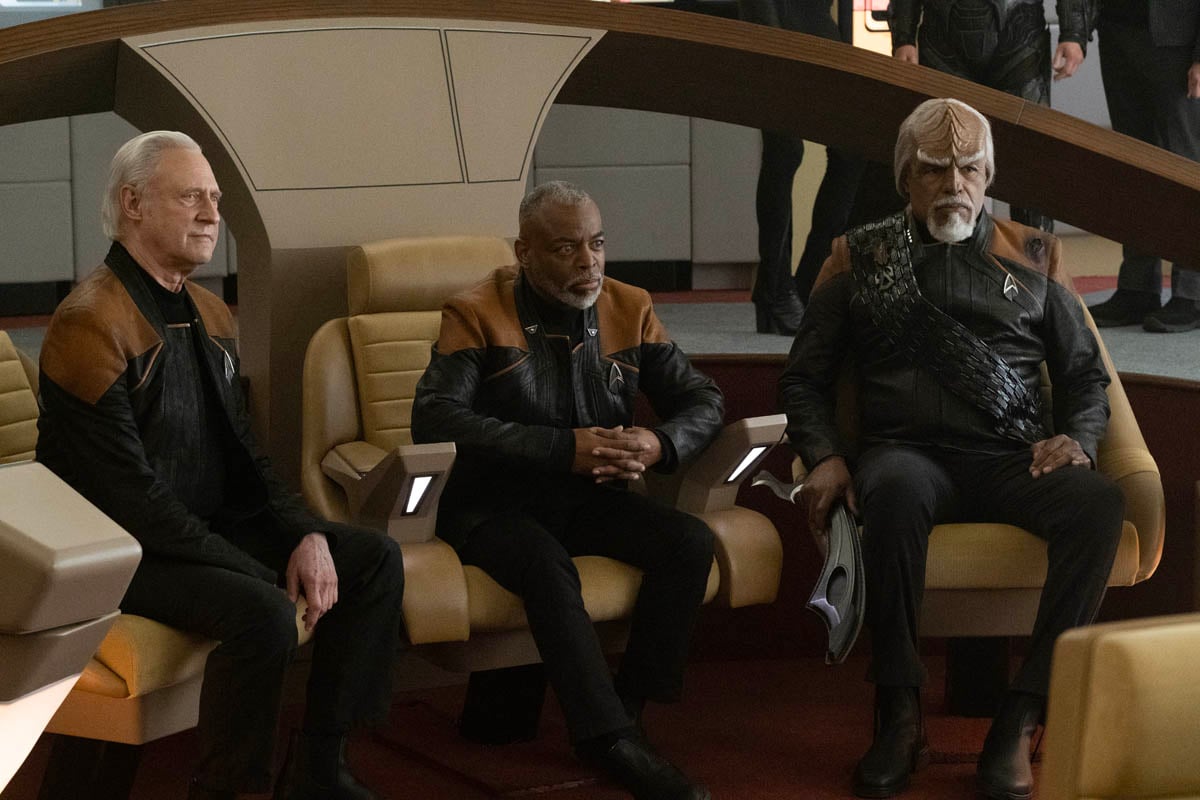
They would send that stuff over to us for the most part, for some of the bigger set-piece stuff. They would give us a couple of different camera angles. They'd say, “Here it is from this side and here it is from this side.” They would just create stuff and they would give it to us. That way, we could have something to work with as we're piecing it together. We could kind of play with, what angles do we want to use? Is it better to see the ship from the front or is it better from the back? It's one of the things you learn by doing a lot of big VFX stuff: You got to use your imagination. Even when I'm editing, you're just kind of thinking, okay, here we get to the thing. If someone was recording me doing it, I probably look like a crazy person ‘cause you're talking through it.
I was gonna say. You're making the sound effects with your mouth, right?Right, exactly. You're just making it up for a lot of that. Then, a lot of times we put sound effects into it and then we'd send those slugs to VFX to say, “Hey guys, here's the early thing of what we're thinking is gonna happen. We've got some sound effects to show you the timing of what we're thinking.” but again, it's just the guideline. Then, VFX would do their thing and then we'd get something back and then we had things to note and things to talk about. Terry was very big into the VFX of it all and just really wanted to get the ship stuff right because it's such a huge part of Star Trek.So luckily, yes, we did have some of those things to work with, but otherwise, there's a lot of imagination happening in various stages of the process in the edit room.
It's cool that you got some pre-vis, especially that there are different angles that they didn't just stick you with, here's a spaceship.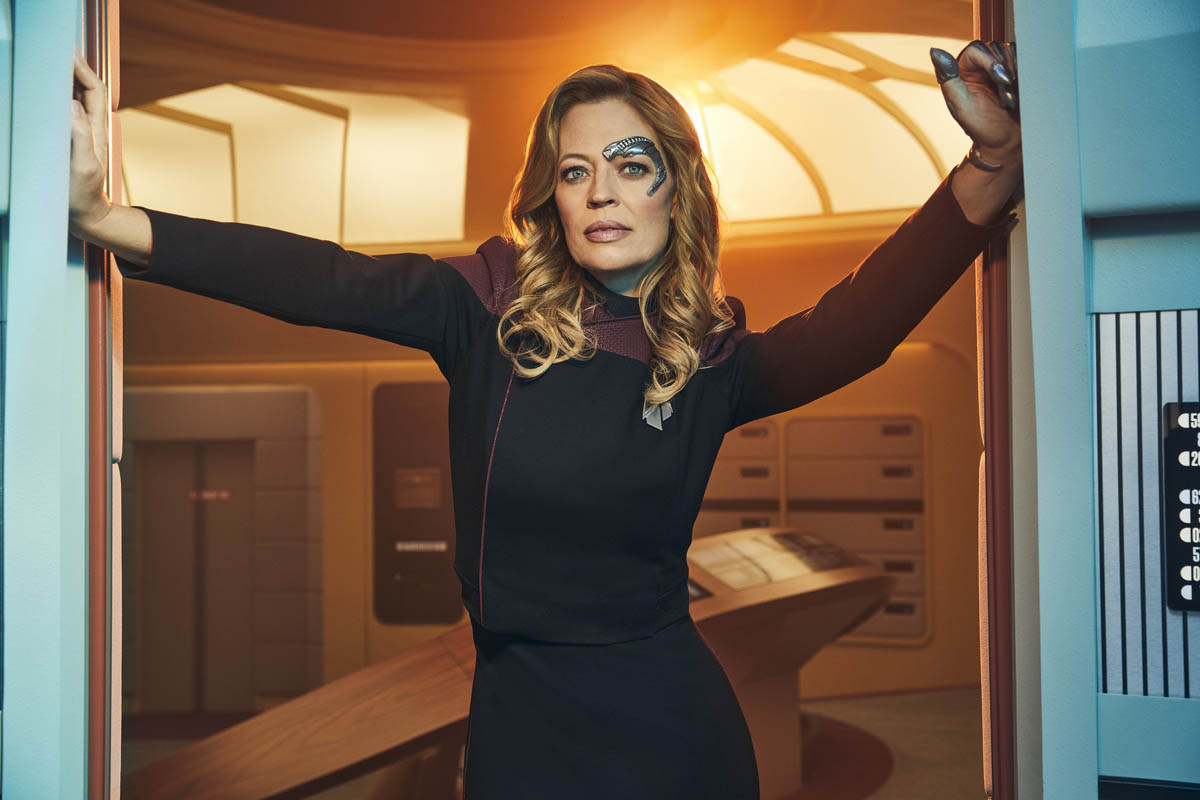
Yeah. It was cool to see the VFX team have ideas and be invested creatively with it. It wasn't just us saying, “We need this.” We said, “The ship's gonna do something. Here's the story. What's happening? Go.” There were only a couple of specific times where we literally had meetings with the pre-vis CG artist, where we are very specifically trying to get the idea. The example I'll point out was in episode four where they're escaping from the nebula. It's exploding, right? The ship is riding this shockwave. That was one of the things where we thought, well, how is the ship riding the shockwave? What does it look like? At a certain point, things are going wrong. What does that look like? We had a meeting with them. We said, “Can we dial in the shots about what's happening?”
Then, at the end of that, they throw an asteroid at the villain’s ship, the Shrike. But you’re thinking, where are the ships? It's like we're flying out of the thing. The Shrike is here. That was one where we had a big meeting with the VFX team. It was cool because we were promoting into the pre-vis artist’s station and he could basically just move everything: "We're gonna go over here. You wanna go up this way? Okay, cool. So it's gonna go like this. Then, we wanna do a reverse and then we just swing it around." We could just talk about where the ships are.
It was super efficient, rather than getting a “Here's a pre-vis, no, it's not right. Here's another pre-vis. No, no, no. It's not quite…” where you’re going back and forth and it's taking forever because again, these shots take so long to do, you don't have time to do that. There were a few instances where we kind of used the technology in a cool way to bypass some of those early notes passes. We could get to the root of the shot. There's a little back and forth as far as like, what are we trying to say with the shot? Some shots are just A to B. We're traveling A to B. Some shots are, "This is the story that's happening," so that's usually my job on the VFX side of things. But on this particular one, I think Terry was kind of bringing me in as a producer on it as well to just be another voice, be someone that he could say, “Is this crazy? Is it working or is it not working?” I'm honest with him, so I would certainly tell him if it was not working.
I think honesty is something that comes up over and over again that is a valued asset of an editor, something the producer looks for. They're thinking, "I hate when he tells me that something isn't working, but I'm glad somebody's doing it now instead of later."I always look at the edit room as kind of a therapy session for everybody, at some point as far as getting all the baggage from set off and all the things that happened and let's erase all that. Let's get all of our systems and now let's focus on the thing.
There's no benefit to not being honest about it. Now, you have to be tactful about it and you have to find a time and place to do it, but I think you absolutely need to be honest about if it's not working and you may not have the answer, but I think it's okay to put out there, is this working? Is this feeling right?

A lot of times, those are the notes that you get to start with. I don't know if it's working yet and there may not be a solution, but as long as we're all honest about what we're feeling about it and if it's working as is or if it needs some work, I think honesty is the keystone to all of it, really.
I noticed, in multiple episodes, just like it is almost in any TV show, that you've got a lot of jumps in time or storyline jumps from one person's story to another or one planet to another. Is all of that stuff happening as scripted or are you finding that you're needing to move some of those edit points between one scene and another, one storyline and another in post?Most of the time, it is. Sometimes, it'll just be, as you are going through it, you're thinking, "You know what? We've been away from the other people for quite a while now." Again, it's always a question of, “Is there any benefit from popping over to them? Is there a spot we can go over to them and catch up?” A lot of times, when you start to do that, when you start to get the cool intercut things happening that you might not necessarily have thought of, but then you start doing it and you're thinking, "Oh, well now you know this, and then we can go back to this. You know what? We actually don't need the end of this scene because they're just setting up this thing. But now, we're into that so we can lose that." Now, the pacing picks up. It's an exploration with all of it as far as just watching it and getting a feel as far as like, who are we missing? What are we missing? It's an added challenge with this season because there are so many characters.

You have a whole Next Gen cast. You have Raffi and Seven from previous seasons of Picard. You have Todd, who's playing Captain Shaw, who’s a new character. You have all of these characters and you wanna make sure everyone gets their time as well. That's another factor: Have we been away from somebody for so long now that it's like, what have they been doing? Is it jarring when we come back to them? A lot of it is laid out as it's scripted, but I think through doing it, we've kind of found new points to cross over and check in with the other team and kind of go back and forth. That's something you just have to kind of feel out as you're doing it.
When you're cutting these scenes, obviously, you're choosing a pace, you're choosing a rhythm of the cutting in the scene itself. How much of that is changing, either contextually as you see the scenes together or is there any time pressure? Do you need to hit times?No. On this one, there was no overall episode length or anything. I think Paramount wanted them to try to be under an hour if we could. I'm used to that on some network TV where you got to get to 43-50 and then you're trimming with the time in mind.
This was nice because you're just kind of trimming and cutting as the scene dictated. For me, as soon as you make changes, it ripples through everything. The timing will tend to just change ever so slightly. Then, you find yourself kind of re-trimming and kind of going through scenes again, ‘cause they're almost like living organisms. They are constantly in flux. They're constantly changing, but I think that's part of the cool thing about editing in general, that it's such an evolving thing that you're making. It's constantly changing.
Luckily, we didn't have the time pressure. It was so that we could really focus on what feels the best. It doesn’t need to slow down. Great! We can slow it way down. We did that in some spots too, where I think on a network show, your instinct would be, we don't have time to slow it down too much, but on this, we kind of could.
I think that's evident in the first episode where a huge chunk of it is them getting on the ship and taking the ship out of Space Dock. Terry really wanted it to feel like a moment, like this is the launching point of the season. Let's live with it. Let's be in it. Let's see the ship come out and let's really enjoy the space, the exploration of it all, as we begin our journey. I don't think we could have done that if we had the network time constraint.
I think it would've been, “Well, what's the best way we could bop through it to get the story moving here?” It allowed us to take the time on that, which I think is cool. I think that sequence is so quintessential Star Trek as far as exploration, space, the final frontier, let's go on a journey. That's what we were able to lean into with that.
You mentioned the fans before and that's just something fans want to see. As an editor trying to tell an efficient story, you might only want 2 seconds of something, but if you're a fan, you're thinking, "I wanna watch that for an hour and a half."Right. Yeah. We just left the ships in. Then, our composer, Stephen Barton, just did a phenomenal job with creating this new theme for the Titan that was so Star Trek, you just wanted to hear it.
You just wanted a moment to just listen to it and see the ship and just enjoy the moment of it all before it's gonna get crazy and we're gonna have plenty of action. This is a moment to just enjoy the start of the story. I think the fans really enjoyed the ship porn as we call it, just letting the ships live on screen for a while.
You mentioned the composer. What were you using for temp during this? Were you trying to temp with all Star Trek stuff or were you temping with like what any of us would temp with?I think there was a mixture of both. Terry really wanted to get into some of the classic themes, the Goldsmith, the Horner stuff, but gave it its own spin. We had all of the soundtracks to play with and we used them a fair amount. Then, there were just the things that we normally temp with because when temping, you're just trying to get a bit of the rhythm and the emotion of it, primarily. Temping with Star Trek stuff was hard because it's so scored to the thing. Half the time you listen to it, that's the part where they do the thing in the movie.
That’s where he pushes the button.Right. It's hard to edit some of that stuff too in the temp side. It was just more of your kind of normal temp score stuff. Then, Stephen took and he just kind of Star Trek-ked all of it in a great way.
Stephen and Frederik Wiedmann, who's the other composer came on, both had a great ear for taking the blueprint and thinking, okay, now we're gonna make it the show.
You mentioned the showrunner directed a final couple of episodes. What about before that? As somebody that's been on the show, what kind of stewardship are you doing with a new director or with a director to try to make sure that they're delivering what the showrunner is eventually gonna want?I take this approach with all the directors in TV. A cool aspect of working in TV is that you get to work with so many different directors, see all their different processes, the things that they like, the things that they don't like. The thing that I always try to bring to a director with their director's cut is: we have the editor's cut. The editor's cut is everything. I put everything in. Every line is in. Even the ones that are gonna get removed. It's all in there. We have the whole thing. So now, let's make our own thing. What do you like? Here's my pitch for things where I’m feeling like this is feeling clunky. What can we do with it?
I just say, “Let's do our own thing. Let's cut whatever we want to cut out of it and rearrange whatever we're gonna rearrange because the cut exists.” We have the editor's cut and if there's ever a question about what was cut, here it is. Here's what was cut. Here's why we cut that.
They may agree with it or they may not, but I think it's crucial to start the process going of finding the show. I try to be supportive with directors and a safety net as far as, "Look, let's, let's do this and we'll take it as far as you're comfortable with."
If you're not comfortable, you rearrange whole chunks of it, that's totally fine. We won't do this. It's your cut. What do you wanna do? What lines do you wanna lose? What temp ADR do you wanna put in? Let's do it. Then, the showrunner is either going to say yes or no to the things.
I've never had a showrunner who has a bad reaction to seeing a director's cut where things have been removed. It's always, "What was there? What was the scene? Here's the scene." Then, most of the time, they say, “Yeah, I see why you cut into that. Okay. The scene is going on for a while now. And maybe we don't do that, but maybe we do something else.”
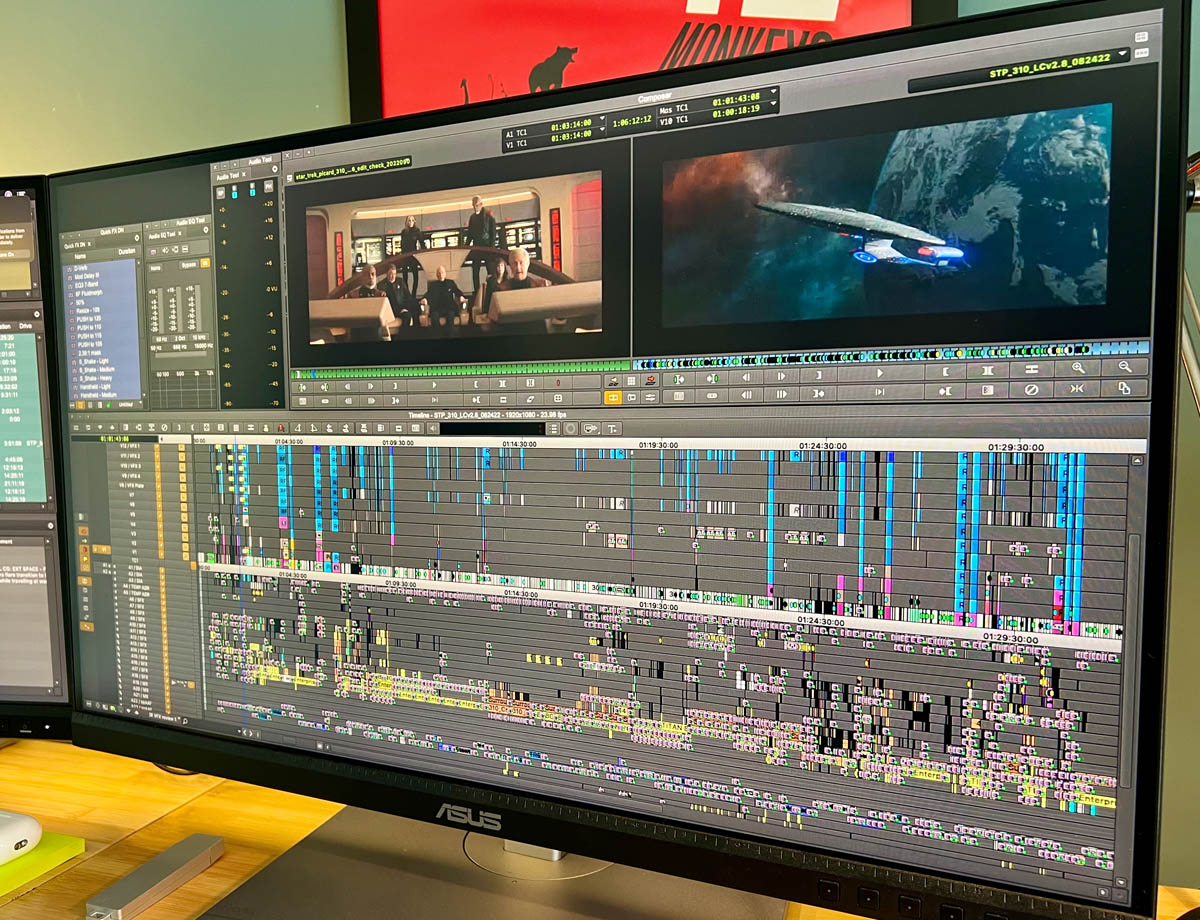
That's just the process. The director's cut is their cut and I want to be a collaborator with them and experiment with things. So as far as they wanna take it in the director's cut, I'm down to do it.
If they're not and they have hesitations, but they have caveats, I'm happy to pass those along to the showrunner as well. They were thinking about maybe doing this, but we're worried it was gonna be too extreme. But it's a pitch, it's an idea. It's the full collaboration on all fronts, especially in television with the time deadlines and with the multiple episodes that are happening. I just try to be as much of a team player and as supportive as I possibly can be ‘cause I know it's a really tough job.
You mentioned the editor's cut, the director's cut. Fill us in on what kind of schedule we're talking about. What's the shooting schedule? How long do you have to have an editor's cut ready for the director? Is it the typical four days for a director or do you have more than that?This one, we were doing block shooting, so two episodes at a time. The director would do two episodes. I believe it was like 20 days to film two episodes. They had about 10 days an episode.
They would shoot and we were cutting while that was happening. Obviously, in communication, as things were coming in as far as like, hey, I think maybe you might wanna get a pick up a shot of this because I don't think we have it necessarily.
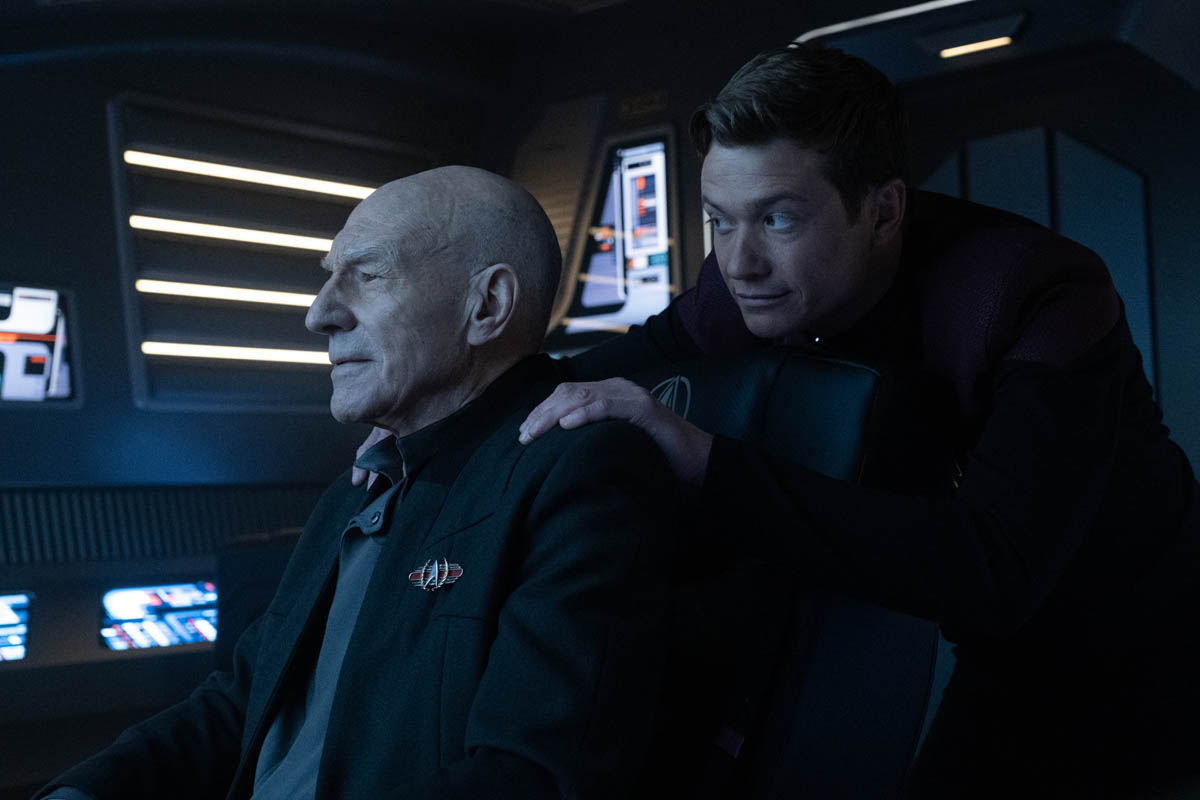
Sometimes, the directors would do it. Sometimes, they would say, “We don't have time. They’ll get it later. But just try to be as open as you can about the things you're discovering.” Usually I got three days for the editor's cut, after the shoot was done to get my editors cut together — I have to give a huge shoutout to my assistant editor Justin Bloch, who is a sound master and is kind of the reason that you're able to get shows as complicated as this done in that amount of time, as fully formed as we can with temp score and the sound effects and a lot of temp VFX where we can.
The director's got four days to work and then it was off to producers. I'm trying to remember if there was a set time. It might have been like nine days or something for a producer's cut, but that was a lot of times flexible depending on other things that were going on. I mean, fast-paced for sure.
Does it help on those cross boards that you're getting only half the material?You know what? It actually does. At first, I don't know how I feel about cross-shooting, but then, in the end, it is actually a total lifesaver. Some days, it's all your episode, so your dailies are huge, but that's what you're used to anyway. That's what I'm just used to, getting a full episode's worth. But some days, you get none. Then, you’re thinking, "Well, now I have a catch-up day. I can go back to that massive scene that was giving me problems before, but I just kind of stitched it together just to make sure it was there. Now, I can go in and actually look at it and re-look at the dailies again and just kind of make sure that I have it." That was quite nice and that you just have more time.
Then, it's almost like you have four weeks of shooting. I didn't feel as much pressure with the block shooting as far as the editor's cut goes than on some other shows, even though this show is much more complicated with many more visual effects than a lot of other shows.
Any specific scenes or an episode that you remember some cool creative solutions that you came up with that needed to be done?Episode six, which is where they have to go Daystrom station and they're trying to get in to see the archives, to see what the changelings had taken from the station. It's like a heist type thing. Meanwhile, our crew is being pursued by Starfleet, so they have to disguise themselves.
So this is where we meet Geordi for the first time. They go to the Fleet Museum and they get to see all the cool old ships. That episode was a challenge in a way because it's kind of a heist, but you wanna keep the tension going the whole time.
They're on the station and you're intercutting between the two things. Again, the problem is if you're on one too long, then when you come back, it's almost like you need a reset. Like, where are they going? Or what's going on in this?
There were a couple of bits of scenes that just, especially on the station side, felt like they were just dragging the pace down and it was starting to lose the tension about what was going on.
It was feeling like, well, how do they have so much time to stand around and chat? You know what I mean? That was what was starting to creep in, in the back of your mind, which, that's not good. We had started to think, what if we intercut this bit or this bit?
There's a really cool kind of sequence in that one that's about legacy. It's after they find data or what will become data that was different scenes. But Terry had the idea of Picard and Geordi talking about their children and the things they pass on.
Then, on Daystrom Station, it was about the hologram of Soong, talking about all the different personalities that he had put into this data and hoping that all of these different things that he passed down would then come together and kind of create something better. They were kind of talking about the same type of thing, but there were different scenes.
Terry said, “What if we just intercut this? They're both talking about the same things and we'll pre-lap, post-lap dialogue over the two different scenes.” We started doing it and then it was very cool, especially because they're at the Fleet Museum.
So while you're talking about things you pass down to your children, you're seeing all the classic old ships from Star Trek, you're seeing the Enterprise, Kirk's Enterprise, and then it's going around. Now you're seeing, the Titan. It was one of those great moments of all the elements that were perfectly, coalesced together to create this really cool moment that had a lot of emotion and impact.
I think talking about them in individual scenes would've just brought down the emotion of all of it. That was a cool problem-solving thing, where we have all these scenes, they're just going on and on and on. How can we make it feel like something?
That was a pitch. That was like, roll the sleeves and let's see what happens when we start slamming these things together and I think it turned out pretty cool.
Yeah, absolutely. I've heard about that more and more where there are two scenes and maybe they're a little slow and you're trying to figure out, well, how do we pace it up? You can't really because people move around the room or something and now they're in the wrong place. You're thinking, "But what if we intercut the two scenes that solves all our problems?" Like you said, it also blends two concepts together like the family.Yeah, it does. I think it magnifies the emotion where the scenes themselves were nice scenes, but together, it had this other element to it that it almost took your breath away a little bit, especially as you're seeing the starships around the Fleet Museum, that beautiful shot that VFX did.
We've seen all these old ships and its sense of legacy and things we passed down and it was very, very cool. Temping that one was the hardest part of it. Finding the right score to thread you through it, but keep building with it as well. Then, Stephen just blew it out of the water when he scored it.
In the end, you're almost thinking, I couldn't see it any other way. In a weird way, even though this came from an idea that at the end you're thinking, this is kind of how it had to be.
Yeah. The funny thing somebody once said to me, “If I showed you how it will be approved in the end at the beginning, you would tell me I was crazy.”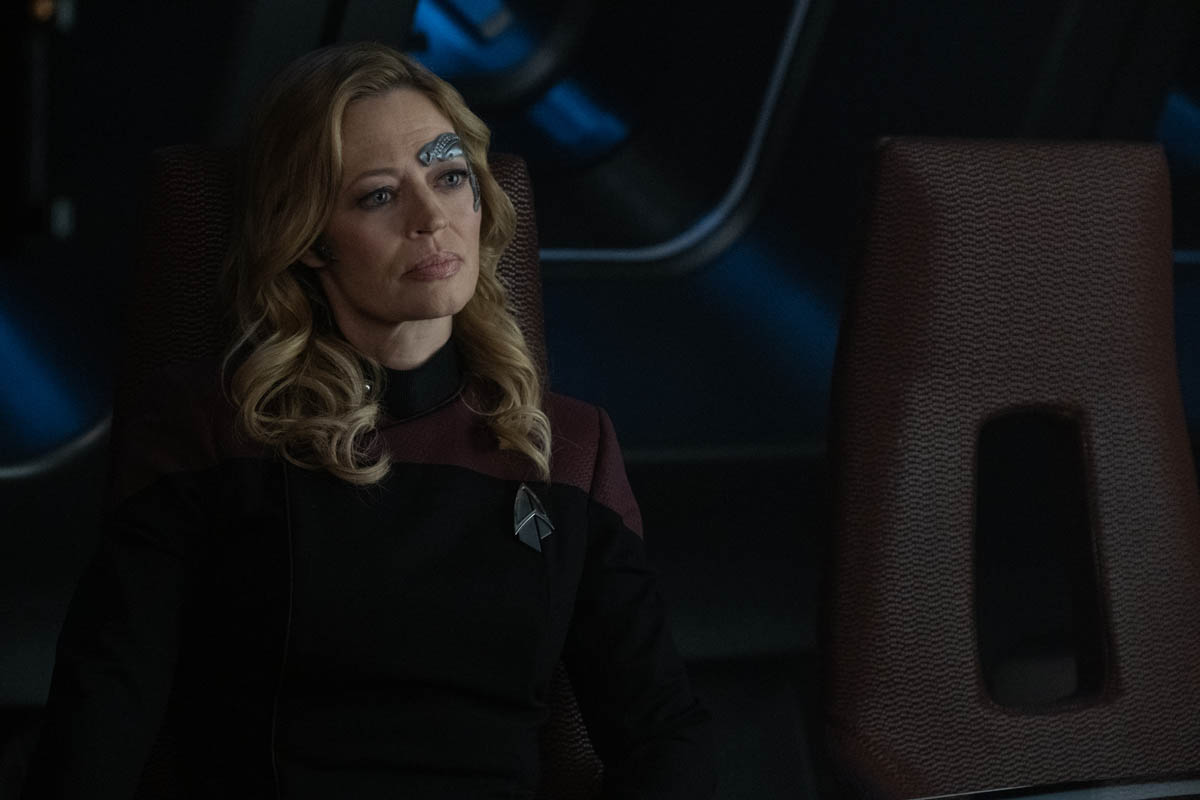
Oh, I say this all the time. Let me take my time machine and I'm gonna screen you the finished thing that we came up with. It’s the process and where you are in the process and sometimes it circles back. Sometimes, you go down the road and then you're thinking, you know what? I just think it was better the way it was before.
That's happened before too, where you've tried, you took your big swing at it and you're just thinking, you know what? I think it was better. Sometimes, you need the journey to feel right about it in the end that I wasn't crazy. I think this is the way it is.
So it's all about the journey and I think that is the cool thing about getting notes, about the collaboration of it, is just the exploration of the material, of the story, and seeing what works and what doesn't. A lot of times, if it's working or if it's not working, and sometimes it just takes going down the wrong path to realize, oh, this wasn't broken at all actually.
It's all the process, entirely. I think that's the cool part about the edit is the process. It's not just what can we do with all of this? What are the various combinations doing? How is it helping or hurting or what are we finding from all of this?
It's the thing that makes me most excited once the editor's cut is done, because that's the foundation, right? That's everything. Now, let's see what this thing is. Let's pull the thing apart and rearrange it and see all the different pieces. Look at the pieces. Do we need that piece? I get rid of that piece. Let's move this thing over here.
It’s such a cool, interesting process that makes you feel good at the end because again, the edit's never done. We could edit these things forever. You could endlessly keep doing it, but at some point, you have to feel good enough about what you've done that you can just say, you know what?
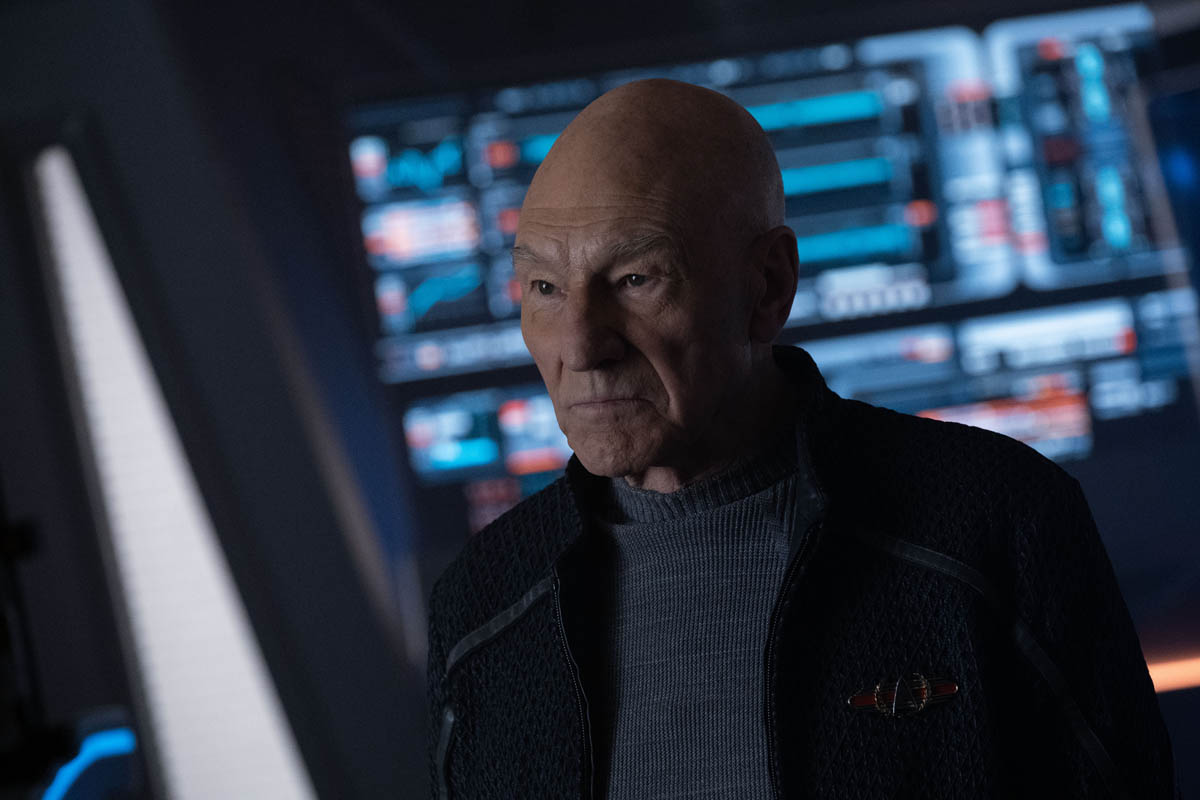
This is good. What we've done is this is, this is great. You can always second guess everything, but it's the exploration of it that gets you to that point where you can just sign off on it, where you can say, no, no, no. What we did is great and I can't wait for people to watch it.
Something you said made me think of you as a drummer again. It's not necessarily that you know rhythm because you're a drummer or pacing, but it's also that musicians are usually in bands, which means you're collaborating, which means you're saying "Oh, you know, maybe this song would be better if there were only three verses. Or let's do the bridge here. Or maybe this is a good place for a drum fill." You're in there saying, “How can we plus this? What do you think? Oh, I like that guitar thing. Let's do that guitar thing right here.”That's a perfect analogy ‘cause it just brings me back to songwriting with my buddy who I was in a band with. He would play something and say, “That's cool,” and he'd play a couple of different things. “That's cool. What if we pull that bit from this bit and then we did this thing here?”
Then, you start to play it out. You start to jam on it. Then, he’d say, “What if he did it this way?” You say, “Oh yeah, let's think about it that way. That's cool.” It’s that play back and forth of just pitching and just trying things.
And they fail, right? You're thinking, oh, maybe we should switch this to a different key. Oh, no, no, no. Let's go back.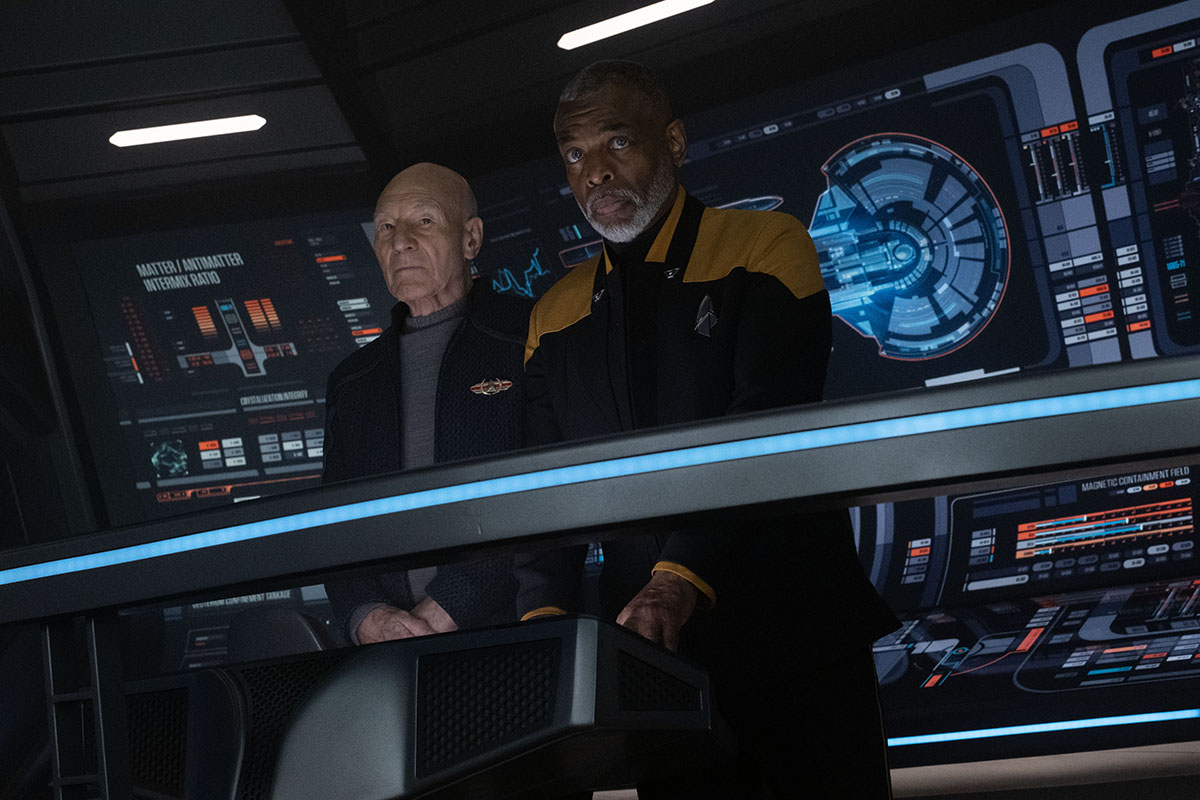
Absolutely, but you have to try it is the thing. ‘Cause otherwise, you would always wonder. If you never did try to switch the key, maybe it's amazing. Maybe suddenly, it just takes it to a whole ‘nother place. You're thinking, "Wow, I had no idea it was gonna go there." Sometimes, it just crashes and burns, but you don't know until you try it.
That's why I'm an advocate of always trying every note. All of it. Even the ones that you see and you're thinking, I know this is definitely not going to work, but I'm gonna try it because again, the beauty of non-linear editing is we have it. We can just go back. I just revert. It's no big deal.
I'm not sitting here all night on a flatbed, making a bunch of stuff, and they're saying, nah, we don't wanna do any of that, and you're thinking, okay, well, now, we gotta revert all that. You have to try all of it.
In trying it, sometimes it doesn't work, but it gives you an idea for something else that may not even be in that episode, that might be later on, that you think, you know what? I had this thing, I was doing notes on this other episode, and I kind of have this idea. I think it will work here. Can we try this? That’s what's cool about working with someone with Terry. He's open to all of it. He says, “Yeah, man, let's try it. Do your thing. Hey, you have an idea. Have at it.” He's very hands-off with a lot of it as far as, here's the concept, I trust you to play with it and see what I wanna see what you come up with.
It's a great amount of fun and it was one of the real rewarding things with this season in particular because you're doing that, but you're also doing it with some of your childhood heroes, with these characters that I grew up watching. Sometimes, you had to pinch yourself. Are these characters really on my screen right now? It's incredible.
I love the discussion of musicianship and how it preps you to be a good editor and all kinds of great conversation points that we had. Drew, thank you so much for being on Art of the Cut and it was a pleasure learning about how you helped construct Picard.Absolutely, Steve. Thank you so much for having me. This was amazing. Love your show. I'm honored to be able to be a small part of it, so thank you.
